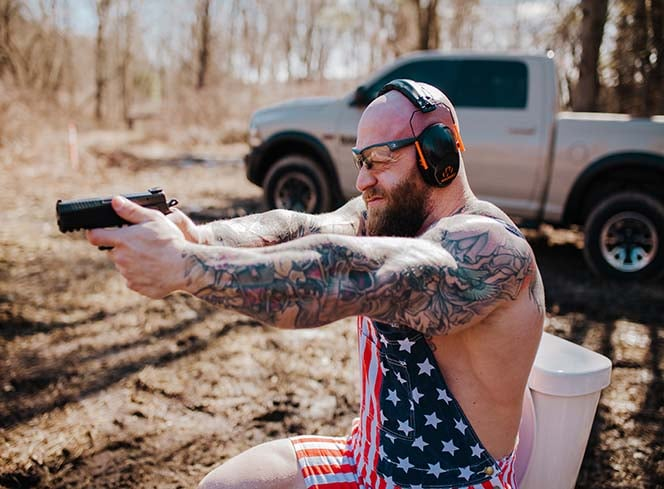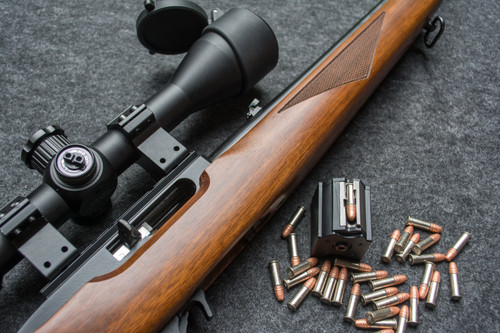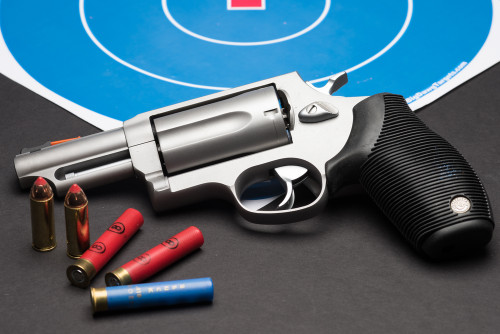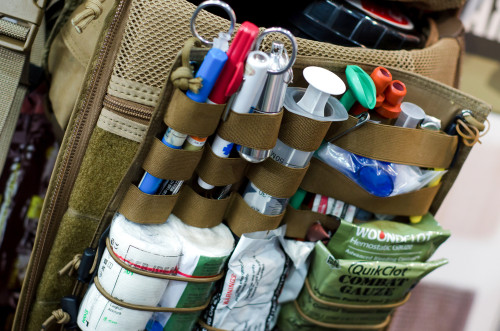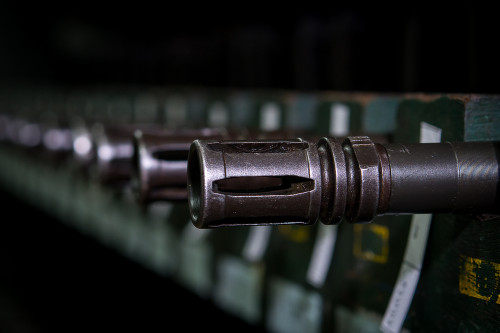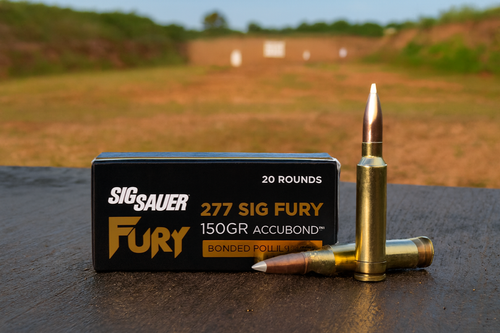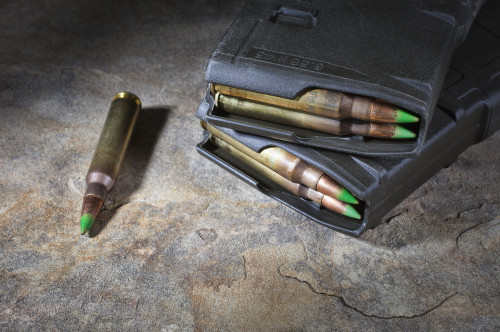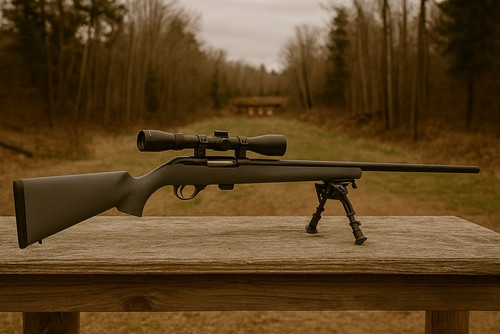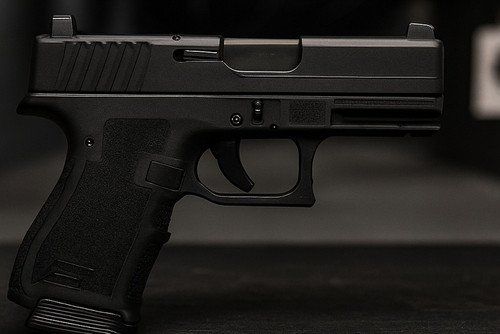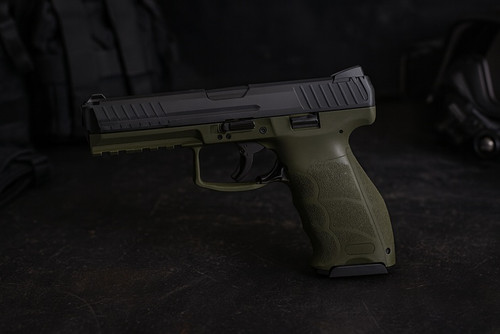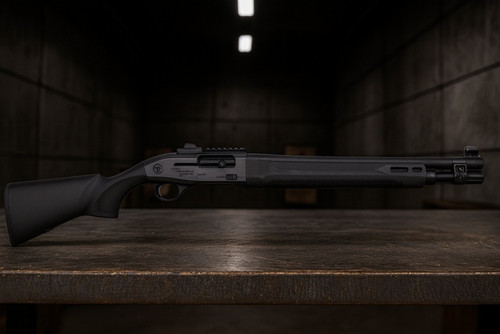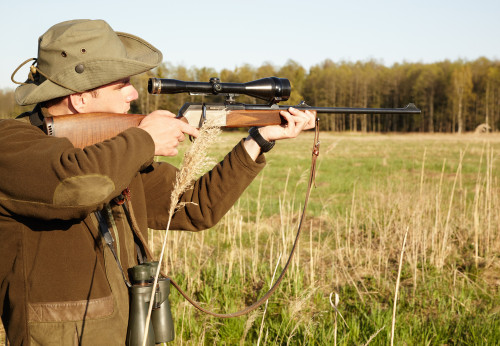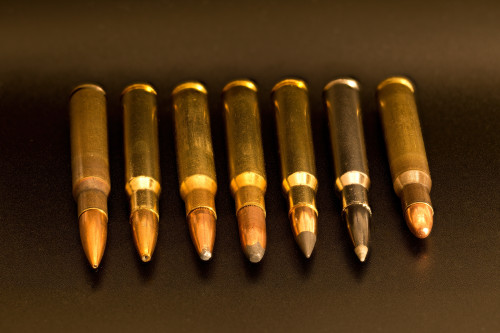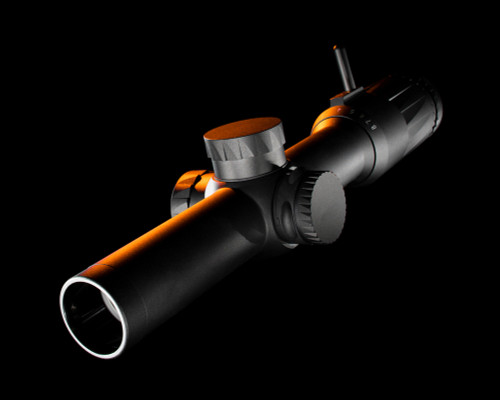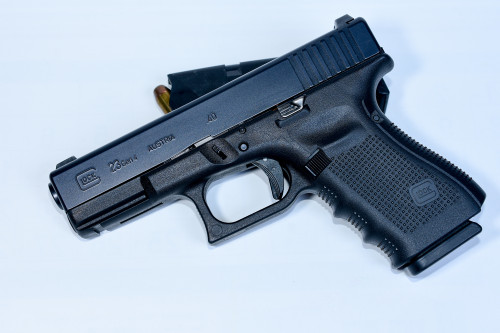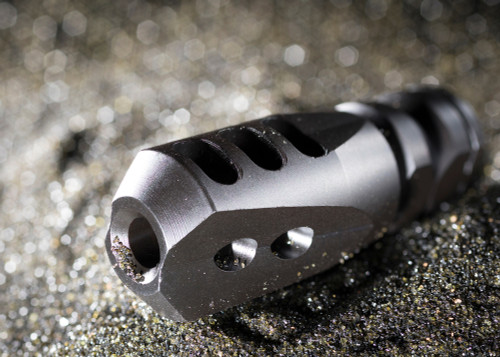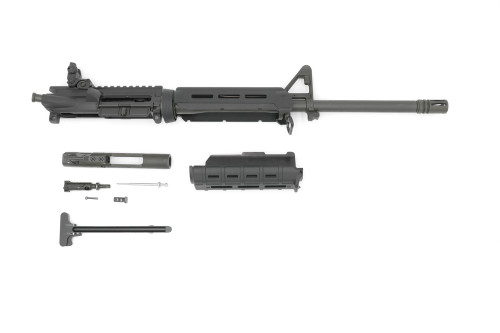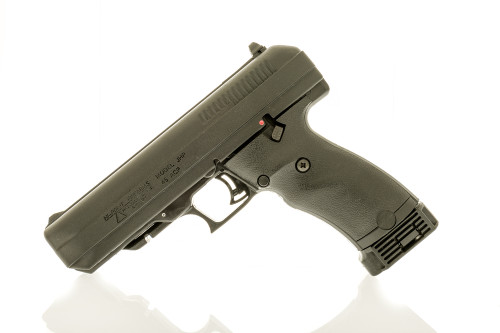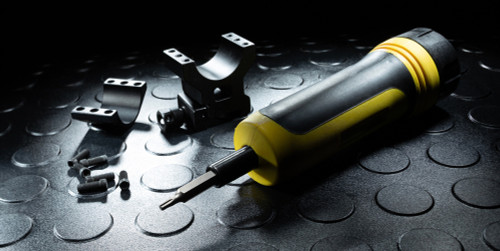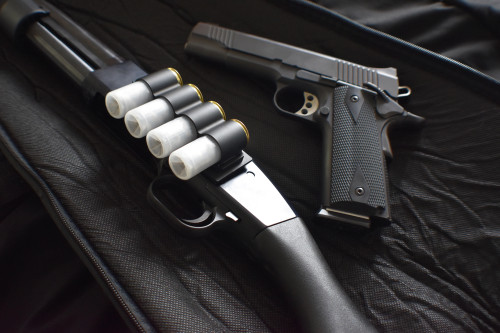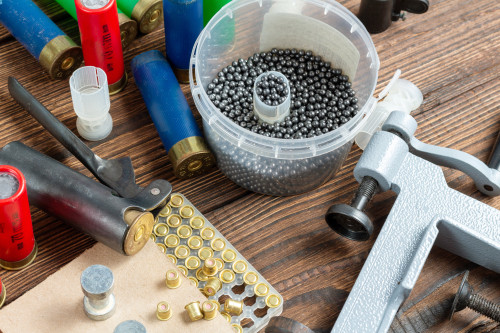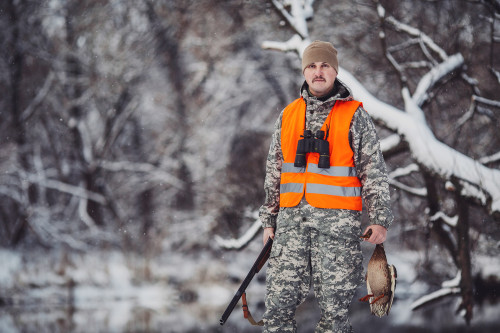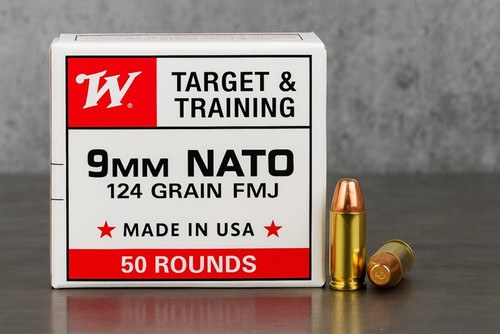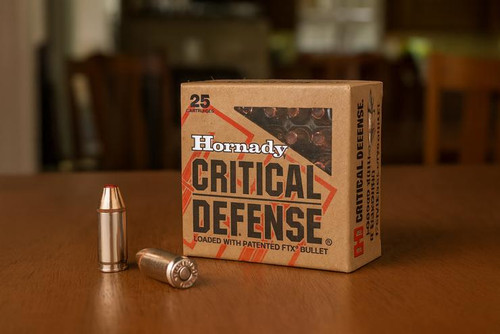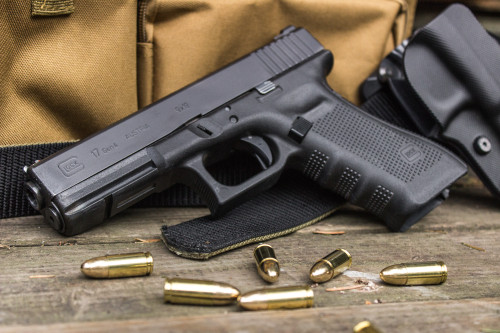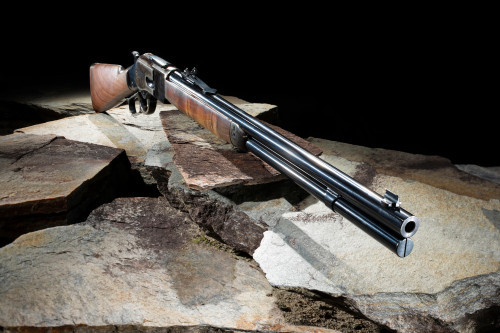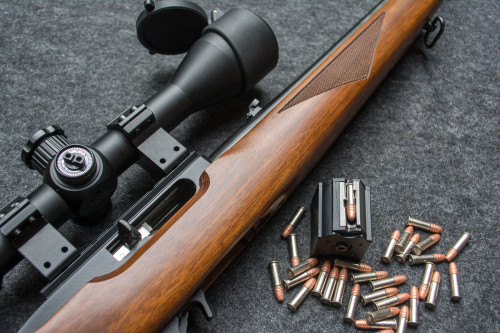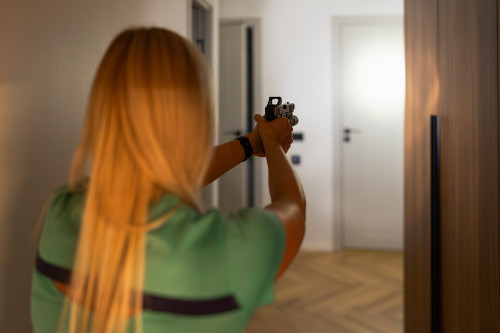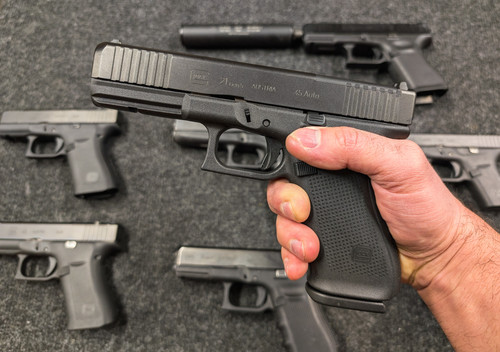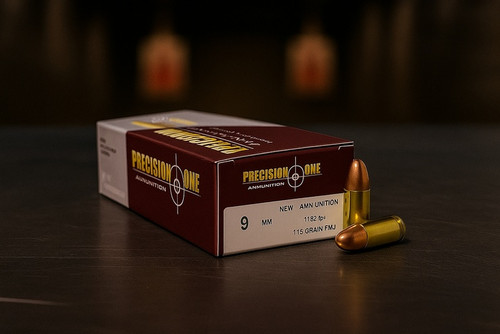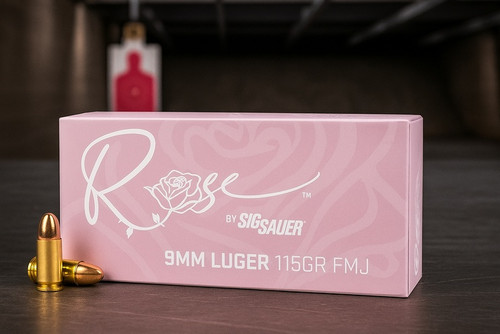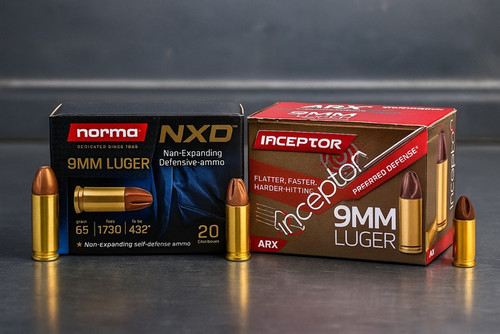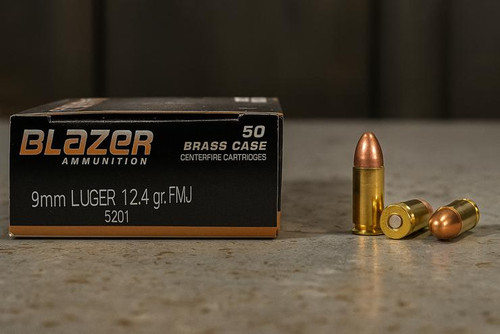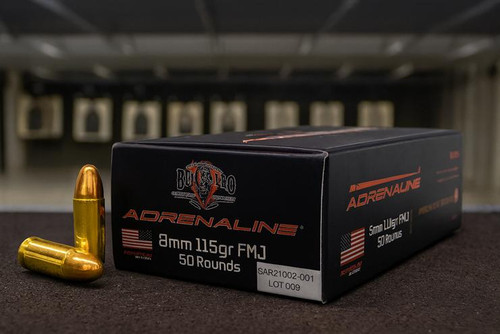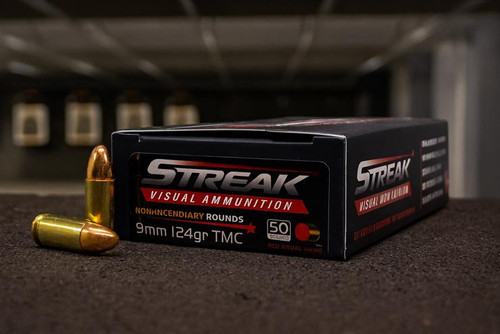Long range shooting and hunting have come into vogue as affordable, accurate rifles have flooded the market recently. These days, you can get a rifle that’ll shoot groups smaller than a snuff tin for less than $400. Plus, you can get it in any of a dozen or more calibers.
So is there a right answer for the go-to caliber? It depends on who you ask. But there aren’t just two camps, there are scores. The quickest way to start a fight at a shooting range or on a gun forum is to say one caliber is better than another.
But let’s not get too carried away here. We’ll argue for and against both an old favorite and a newcomer that helped spur the long-range craze of today: The 6.5 Creedmoor and the .300 WInchester Magnum (.300 Win Mag). Grab your gloves and mouthguard and let’s take an objective look at these superb offerings.
(Source: https://proarmory.com/products/hrndy-ph-6-5creed-143gr-eld-x-20-200.html)
6.5 Creedmoor
Welcome to the octagon! It’s the most polarizing cartridge in recent memory: the 6.5 ManBun, JesusMoor. If you’ve done your research, you’ve likely seen the memes, too. There’s been an inordinate amount of criticism leveled at the 6.5 Creedmoor since it began gaining ferocious popularity.
The Creedmoor’s wildfire growth led it (and its adherents) to be mocked as bandwagon jumpers, hipsters, clowns, fools, and ballistic ignoramuses. But more than a little of that was due to the green-eyed monster (jealousy).
In reality, the 6.5 is a wonderfully efficient cartridge. Its length, bullet design, and case capacity help it punch above its weight on the long-range scene. But was it really revolutionary?
The loudest critics were (and still are) proponents of the .260 Remington, which is quite a reliable cartridge. Many of these critics are also fans of the 6.5x55mm Swede, a cartridge that’s been slaying men and beasts of the far north for more than 100 years. The Swede holds more powder in its longer case, and has more velocity than the Creedmoor, while the .260 is faster than both of them. So, what the heck is the point of the Creedmoor?
Pour yourself a fresh chai latte, and push away all your preconceived notions — let’s first take a deep dive into the cartridge everyone loves to hate.
Pros of the 6.5 Creedmoor
To be fair, there are some significant advantages to the 6.5 Creedmoor. All memes aside, let’s give credit where credit is due. Just take a quick look at the stats:
| Weight | Velocity @ muzzle | Energy @ muzzle | Drop @ 300 yards (200 yard zero) | Drop @ 400 yards (200 yard zero) | Drop @ 500 yards (200 yard zero) |
|---|---|---|---|---|---|
| 120 gr. | 2,910 fps | 2,257 ft.-lbs. | -7.4” | -21.5” | -43.8” |
| 140 gr. | 2,600 fps | 2,102 ft.-lbs. | -9” | -26” | -52” |
Ballistic Whiz Kid
This is the biggest advantage you’ll find with the Creed. It’s a flat-shooting cartridge with moderate recoil. It doesn’t hit as hard on either end as its near-peer, the .308 Winchester (their cases are almost identical), but the Creed has more than enough juice to topple deer and similar-sized game. Having a flatter-shooting cartridge is good when you begin to stretch out your shooting range.
Why? You’ll have less elevation holdover (compensating by aiming high) and dialing of your scope to get on target. The length and heavy-for-caliber weight of the bullets also cuts back on the windage (left to right) you’ll need to add to the calculus.
Huge Ammo Selection
Manufacturers caught on quickly to the 6.5 Creedmoor’s popularity and crammed the market full of hunting, target, and even full metal jacket practice rounds. Its popularity and abundance means that it’s pretty affordable, and a great way to get into long-range shooting on a budget.

Sellier & Bellot 6.5 Creedmoor 140gr Sp Box Of 20
$19.22
Sellier & Bellot
Prices accurate at time of writing
Superior Accuracy Potential
This one is a no-brainer. After all, this comparison deals with two capable long-range cartridges, not a couple of turds. The 6.5 Creedmoor simply has better accuracy potential than a lot of other cartridges on the market. It’s literally designed that way. In the race for accuracy superiority, manufacturers who didn't keep up were edged out by those who offered a superior product — as it should be.
Great Rifle Selection
Again, the Creedmoor is often the best way to get into long-range shooting and hunting. Money is a big factor because no one's gonna drop $10,000 on something they don’t know they’ll like. You can find a very capable bolt gun or even a chassis gun for less than $500. Both will deliver the kind of accuracy that would’ve got you called a liar even 15 years ago. But remember, your gun is only as good as the glass that sits on top of it. Choose your scope wisely.
Short Action, Long On Results
If a bolt gun is your thing, rejoice. The 6.5 Creedmoor fits inside a standard action like the .308, .243, and other classics. A short-action rifle is smaller and uses less metal in the receiver, so they’re lighter weight than long- or magnum-action guns. This pays dividends for those of us who actually hike deep into an area to hunt, or with mountains to deal with.
More Affordable
Because money is such a huge factor, it’s worth reiterating. Long-range hunting and shooting can get expensive FAST. A grand for a gun, another for a scope, a few C notes for a bipod and accessories, not to mention ammo — and you’re a few thousand dollars deep in no time. The Creedmoor is the most cost-effective way to get into a dedicated long-range shooting rig.
AR-10!
Sure, Nemo makes that AR-style rifle in .300 Win Mag, but it’s gonna run you like $5,000 minimum. If you can swing it, great. But most of us non-A-listers can’t go for that.
However, because the Creedmoor is based off the .308, which is what the AR-10 fires most often, making a .308 AR into a 6.5 is a matter of a barrel swap. That’s it. You can even use the same mags. Can’t say the same about that behemoth .300 Win Mag AR.
Cons of the 6.5 Creedmoor
This list is shorter, but still relevant. The Creedmoor is a cartridge built as a compromise of recoil and power, and while it’s been a huge success, it sacrifices a few things as a result.
Less Kinetic Energy
Yes, it’s flat shooting. Yes, it’s efficient. Yes, it’s a great cartridge for recoil-sensitive shooters. But it simply lacks the oomph the .300 boasts. For a cartridge that ticks so many boxes, one was left unchecked: Raw power. You can't have that and low recoil, and it can only be so flat shooting. That said, the 6.5 Creedmoor does an awful lot of things very well, and it does them more than well enough for most shooters.
Spotty Lethality?
While the memes often joke about 6.5 being worthless for deer hunting, this is likely propaganda from the anti-Creedmoor crowd.
The Creedmoor is an efficient cartridge, and most hunting loads do their killing with expanding bullets. One of the complaints lodged against the Creed is that it’s not fast enough to take advantage of some bullet designs, and some allege the cartridge will sail through a critter making a nice, neat 6.5-mm hole instead of expanding in lung-busting mayhem.
In reality, most Creed bullets are traveling at 2,700 and 2,800 fps which is plenty fast to make a bullet open. Heck, your grandpappy’s “turdy-turdy” ( .30-30) walloped deer at less than 2,400 fps, so it’s safe to ignore the haters on this one. Besides, shot placement is really more important.
(Source: https://proarmory.com/products/hornady-american-whitetail-300-win-mag-150gr-int-sp-box-of-20.html)
.300 Winchester Magnum
Decades ago, you showed up to deer camp with a .30 caliber something, like the .300 Savage, .30-06, .30-30 — or the .300 Win Mag. Sure there were guys who shot a .270 or a .243 (and your weird-ass uncle who shot a .260 Remington), but for the most part game was pursued with a .30-caliber rifle by men in plaid and flannel who smoked Marlboro Reds and drank Hamms or Keystone.
The top of the .30-caliber heap back then was the .300 Winchester Magnum. It was a supercharged .30-06 with a belted cartridge and heavier bullets (up to 215 grains) that delivered more downrange hate for Western shooters or those venturing up the Alaska in search of bear — because that’s what they do in Alaska.
With so much velocity and kinetic energy on the table, the .300 was quickly welcomed into the fold and prized for its accuracy, lethality, and range. Here’s what a fairly middle-of-the-road .30 Win Mag loading does in the two most popular weights, 165- and 180-grain.
| Weight | Velocity @ muzzle | Energy @ muzzle | Drop @ 300 yards (200 yard zero) | Drop @ 400 yards (200 yard zero) | Drop @ 500 yards (200 yard zero) |
|---|---|---|---|---|---|
| 165 gr. | 3,120 fps | 3,567 ft.-lbs. | -6.1” | -17.8” | -36.2” |
| 180 gr. | 2,960 fps | 3,502 ft.-lbs. | -6.7” | -19.6” | -39.4” |
These stats are extremely respectable. In fact, they’re kind of the gold standard against which many long-range and hunting loads are measured, because the .30 is such a well-revered and effective bullet diameter. It’s had more than 100 years of R&D put into it, so it’s safe to say the shooting world is very familiar with what the .30 can do.
Long-Range Pedigree
Bullets of .30 caliber are proven hunting rounds that also excel at long-range target shooting. For starters, it’s big, and in heavier weights (200 grains and up), it’s long. Length is a key in long-distance shooting because the longer a bullet, the longer a manufacturer can make the bullet’s ogive (the rounded part from the tip to the flat part that is seated in the cartridge). A longer, flatter ogive gives the bullet better aerodynamic properties, and the extra weight lets the bullet “buck” the wind better. Wind is everything in the long range game.
The Hunter’s Friend
For hunting, the bigger hole you make in something the better, because it’ll expire faster after it's been shot. Most hunting ammo is an expanding soft-point, hollow point, or tipped affair (polymer slug inside a hollow cavity), which are made to mushroom into a size larger than its starting diameter. When you start with a hole that’s almost a third of an inch, you get a greater margin of error when shooting a critter. If your shot is off by an inch or so, you want a bigger bullet that makes a bigger path of destruction.
Pros of the .300 Win Mag
There are several reasons the .300 Win Mag has stuck around for so long. Let’s cover a few examples for why people love this cartridge.
Reach Out and Touch Someone
If you choose a .300, you’ll never be undergunned. You may feel OVERgunned at times (recoil) but if you can see a target, you can almost certainly reach and kill it with a .300. Its track record since its design in 1963 is pretty spotless, if not a bit overkill for some things like little old whitetail — but you’ll never catch us saying more ain’t better.
Flat Shooting
The huge cartridge case carries oodles of powder, so most .300s have long (24”+) barrels, but with amazing payoff. You get velocities north of 3,000 feet per second out of 165- and 180-grain bullets. It’s a simple matter of physics; more powder = more speed and distance from a given projectile.
I've Been Everywhere, Man
Another big win for this big magnum is its ubiquitousness. Even the proverbial gas station in a remote fishing village above the Arctic Circle probably stocks a few boxes of .300 Win Mag for wayward and forgetful musk ox hunters. It’s just a must-have classic cartridge for hunting certain types of game. You can’t count on the Creedmoor being in stock the same way.
Huge Ammo Selection
Because it’s been around for a while, scores of loads have been developed for the .300 Win Mag. The most popular are the 165- and 180-grain variants, which offer a great blend of performance and manageable recoil. You can get barn-burning 150-grainers that leave the barrel at 3,600 fps, or opt for the super-heavy long-range friendly 220-grainers. That’s a lot of versatility in one gun. It’s Thor’s hammer on whitetail in lighter weights and a legitimate African plains game getter in the 200 and up category.

Norma 300 Win Mag 180 Grain Bondstrike-Sfv
$49.20
Norma
Prices accurate at time of writing
Huge Gun Selection
A cartridge this effective, successful, and longstanding has plenty of support from gun makers. The beauty of guns these days is that it’s a huge buyer’s market; you can get either a $400 Savage Axis or a $10,000 Holland & Holland in .300 Win Mag. The middle ground is littered with dozens of affordable, accurate, and reliable guns. It’s a beautiful thing!
Cons of the .300 Win Mag
No matter how precious a cartridge may seem, it always has drawbacks. Here are a few reasons people might shy away from .300 Win Mag.
Kills on One End, Maims on the Other
This old trope about hard-recoiling rifles applies to the .300. Especially in a lightweight “mountain rifle.” You’re gonna know you shot a gun when you touch off a .300.
That said, it’s not so bad in the grand scheme of things. Yes, it kicks, but damn does it wallop on the other end. This isn’t a plinking gun. The .300 is actually a great blend of recoil/performance, and part of the reason it’s so popular.
It’s Expensive
With big bullets, performance, and power comes a big price tag. There’s really no such thing as “range” or blasting ammo; you just need some moderately priced soft points for fun shooting. There’s also no FMJ .300 like with the 6.5 Creedmoor. For premium hunting ammo, you can pay upwards of $6 per trigger pull, so be prepared for sticker shock.
Powder Gobbler
If you're a reloader, you know the premium on powder and other components these days. It’s so bad that reloading almost isn’t a valid means of saving money anymore. Most reloaders (usually competitive shooters) now are in it for the accuracy and velocity gains over factory ammo. In other words, they’re dedicated to it, and know the cost up front.
But the .300 Win Mag uses A LOT of powder. Case capacity is measured in grains of water (how much water it’ll hold), and this bad boy carries 94. For comparison, the .308 Winchester holds 56 grains of water and the Creedmoor 52.5. Over several thousand rounds, that’s a lot of powder to buy!
Long Action Guns
Lastly is the action in which the .300 operates. The cartridge length dictates you’ll need a long or magnum action rifle when shooting a bolt gun. This isn’t necessarily a bad thing, but some don’t like the extra length of pull in a bolt-action rifle, and actions this long in semi-autos are crazy long. Ever seen the Nemo .300 Win Mag AR? It’s pretty sweet, but dang that receiver is a mile long!
Final Thoughts
The .300 Win Mag and 6.5 Creedmoor are both very popular cartridges — the Creedmoor more so today because it works smarter, not harder. It has more finesse than the brutish .300, but lacks the uber American panache and ass-whooping energy delivered by a 180-grain projectile flying north of 3,200 fps.
In a word, the Creedmoor and .300 WIn Mag aren’t exactly peers. Both are very good at what they were designed to do, so the decision comes down to what’s probable, not possible. Sure, Jurassic Park could become a reality, and who wouldn’t want a full-body velociraptor mount? If you do go on raptor safari, expect the .300 to be the bare minimum. But in reality, you’re gonna be whacking whitetail at less than 100 yards, and you simply don’t need 3,000+ foot-pounds of kinetic energy. The 6.5 Creedmoor is just about all us normal folk need.
But what’s need got to do with it? This is America, damn it! Get the .300 if you want! Just don’t boohoo when it blows out both your buck’s shoulders and kills one in the next county (and leaves you with a bloody nose).
Looking for quality hunting ammo for your next hunting trip? Need a better optic to improve your shot placement? Browse Pro Armory’s selection of rifle ammo and optics for better choices you can actually afford.




